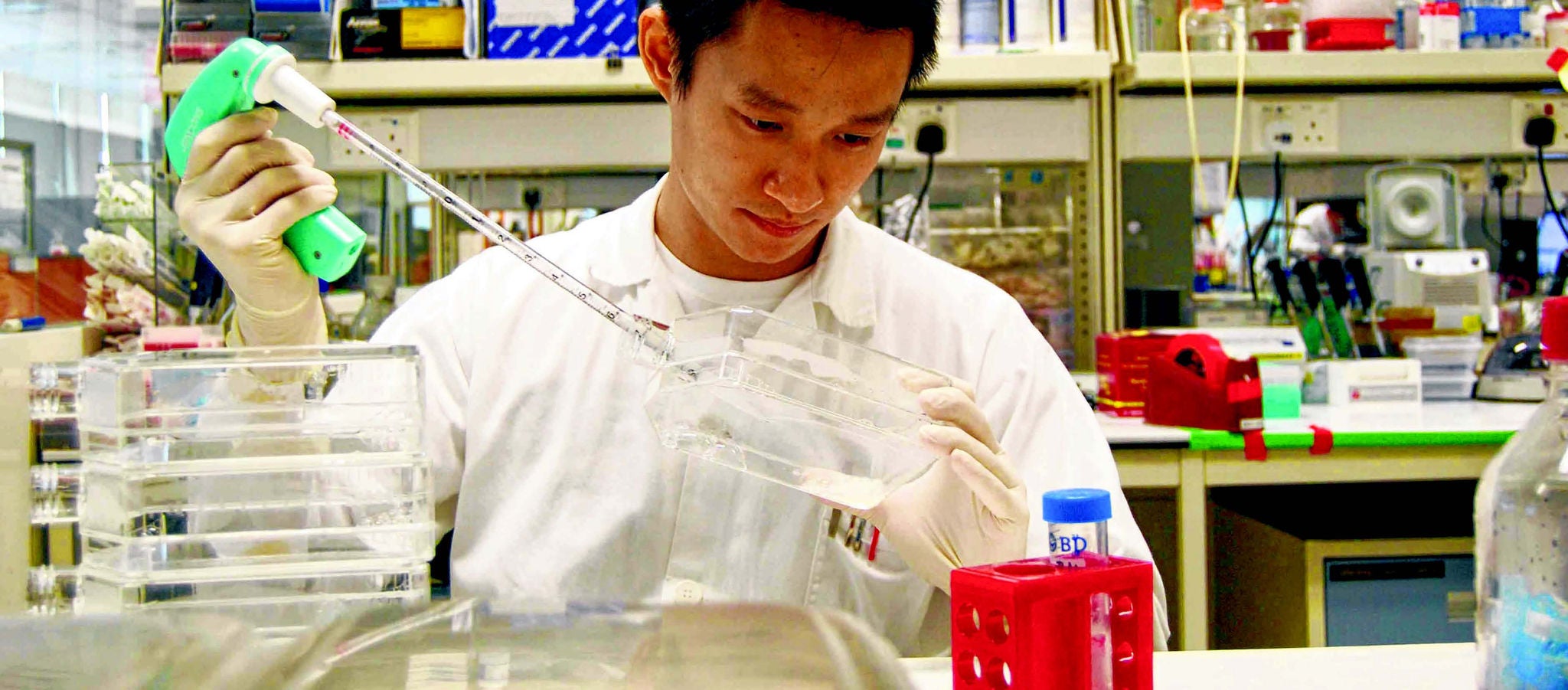
The billions of dollars pumped into R&D here have paid off in the past five years, creating jobs and pushing frontiers in various areas such as water technology and biomedical sciences. Between 2011 and 2015, the Government pumped a record $16.1 billion into research. Carolyn Khew takes a look at the country’s latest R&D report card.
SUCCESSFUL RESEARCH PROJECTS
Treatment for glaucoma
Scientists at Nanyang Technological University (NTU) and the Singapore Eye Research Institute have developed a nanomedicine that will allow glaucoma patients to do away with eye drops. Made up of millions of nano-sized capsules which contain the anti-glaucoma drug Latanoprost, the nanomedicine is delivered to the eye via a painless injection. This benefits the elderly who may forget to use their eye drops daily, causing their condition to worsen.
Membrane technologies
Professor Neal Chung (right) and his team at the National University of Singapore’s Department of Chemical and Biomolecular Engineering have developed membrane technologies for clean water and clean energy. Prof Chung was a pioneer in designing membranes with aquaporin, proteins that allow only water to pass through during desalination.
Cancer drug
This year, the Agency for Science, Technology and Research (A*Star) and Duke-NUS Graduate Medical School developed cancer drug ETC-159, which has advanced to human trials. The drug targets numerous cancers, including colorectal, ovarian and pancreatic cancers.
Fast-charging batteries
NTU scientists have developed ultra-fast-charging batteries (above) that can be recharged up to 70 per cent in only two minutes. Those who drive electric vehicles could save tens of thousands of dollars on battery replacement costs.
KEY INDICATORS
Over the past four years, A*Star has attracted over $1.1 billion of industry research investments in Singapore through public-private partnerships.
A*Star has supported the training of over 1,400 Singaporean PhDs and post-doctorates through its scholarships and fellowships. Biopolis and Fusionopolis campuses host 16,000 scientists,researchers and innovators from the private and public sectors.
In FY2013, A*Star generated 292 patents per billion dollars of spending on R&D. This placed it well above educational institutions like Harvard and the Massachusetts Institute of Technology , which had 226 and 215 patents per billion dollars of spending on R&D respectively.
The number of water companies in Singapore today has grown to over 180, more than three times that in 2006.
Singapore has produced two billion dollar companies or ”Unicorns” – Garena, an online gaming and social platform, and Razer, maker of high-end gaming computers and other devices. Singapore’s R&D expenditure stood at 2 per cent of the country’s GDP in 2013.
Contributed by

English
The Straits Times - Singapore’s R_D paying off.pdf














 Get it on Google Play
Get it on Google Play